Q. Why is "million mile" battery important?
A. Because batteries don't last as long as the rest of the car.
So, how long do cars last nowadays?
1/x
A. Because batteries don't last as long as the rest of the car.
So, how long do cars last nowadays?
1/x
We've all heard/read about ave. age of cars on the road.
Here are some stats. Latest on US is ~12 yrs old.
Note that used cars are often exported from wealthier countries to less wealthier ones. In case of Japan, almost 1/2 are exported, lowering ave. age of cars.
2/x
Here are some stats. Latest on US is ~12 yrs old.
Note that used cars are often exported from wealthier countries to less wealthier ones. In case of Japan, almost 1/2 are exported, lowering ave. age of cars.
2/x
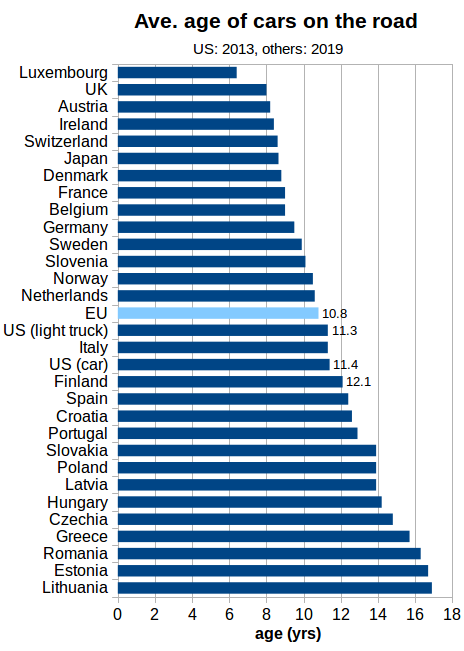
But that's like median age of population. How about % of old cars?
(I don't have newer data for US, hence data from 2013. It's likely ~50% now).
3/x
(I don't have newer data for US, hence data from 2013. It's likely ~50% now).
3/x

Why did I highlight Finland of all places in the charts above (no offence to Finns)?
Because they provide more useful data.
Here's how ave. age & the age at scrappage have changed in recent decades.
You can say that a typical car that is scrapped now are ~2000.
4/x
Because they provide more useful data.
Here's how ave. age & the age at scrappage have changed in recent decades.
You can say that a typical car that is scrapped now are ~2000.
4/x
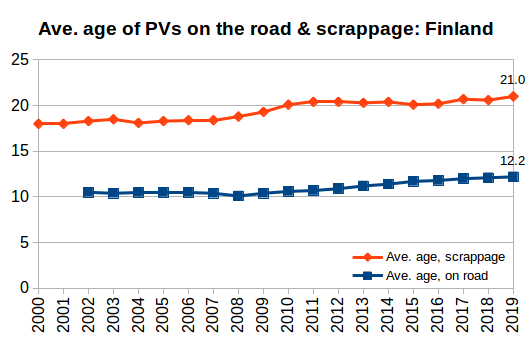
I don't have the same data for US, but I do have data on survival rate (as of 2016).
Yes, ~1/2 of 16~17 yr old cars are still on the road.
5/x
Yes, ~1/2 of 16~17 yr old cars are still on the road.
5/x

All in all, US is pretty similar to Finland.
What all this means is that 1) there are tons of old cars on the road (see below), & 2) we should expect new cars of today to last ~20 yrs if not longer.
>20% of cars/trucks on the road now are >15 yrs old.
6/x

What all this means is that 1) there are tons of old cars on the road (see below), & 2) we should expect new cars of today to last ~20 yrs if not longer.
>20% of cars/trucks on the road now are >15 yrs old.
6/x
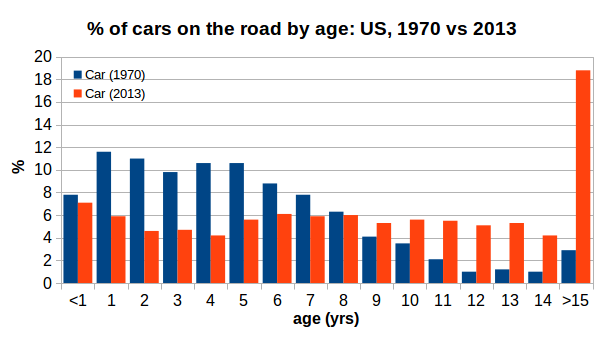

You might say "cars on the road are older now, because cars/trucks are so expensive nowadays & fixing them is worth it."
Maybe so. But even cheap ones last a long time. JPN kei trucks/vans cost ~$10k new & are used hard for real work. Many are exported after deregistration.
7/x
Maybe so. But even cheap ones last a long time. JPN kei trucks/vans cost ~$10k new & are used hard for real work. Many are exported after deregistration.
7/x
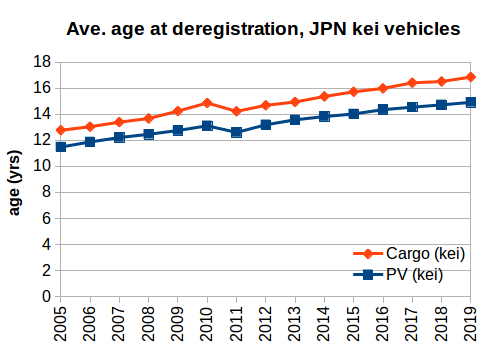
What's great about ICE cars is that you can keep them going w/ relatively cheap fixes. Most of us won't spend $5~10k on a 10 yr old car. That's what you have to do to w/ many BEVs now.
Or...
8/x
reuters.com/article/us-tes…
Or...
8/x
reuters.com/article/us-tes…
Remember that there are no old Tesla. Vast majority are just a couple of yrs old.
Yet, we've seen tricks like above & many reports of battery packs replaced under warranty (or "goodwill").
TBF, that's really not just Tesla. It's just the way it currently is.
9/x
Yet, we've seen tricks like above & many reports of battery packs replaced under warranty (or "goodwill").
TBF, that's really not just Tesla. It's just the way it currently is.
9/x
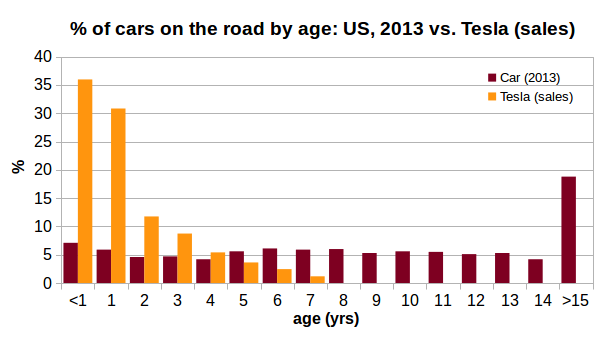
Yes, batteries have lasted longer than expected in some cases, as briefly mentioned in this nice article by @russ1mitchell. But not always, as we saw above.
10/x
10/x
https://twitter.com/russ1mitchell/status/1308156615388925952
Roughly speaking, batteries have to last 2~3x longer or cost 1/3 relative to today. Otherwise, unwashed masses will be even more mobility challenged. Long way to go.
Whatever the cost-saving might be, many just can't afford $10k cars (w/ a new batt. pack).
11/x
Whatever the cost-saving might be, many just can't afford $10k cars (w/ a new batt. pack).
11/x
Remember what happened to used car prices after GFC/cash-for-clunkers? (or now). I wonder what'll happen in Europe (or developing countries that import used cars from Europe). Will ppl just keep 30~40 yr old cars alive?
12/x
12/x
BTW, forget battery swap or "battery-as-asset". It's just an admission that batteries are still too expensive (or just a fraud).
Do you remember those phones w/ replaceable batteries? How much do those batteries worth now? Model S pack in Model Y?
13/x
dailykanban.com/2015/06/23/tes…
Do you remember those phones w/ replaceable batteries? How much do those batteries worth now? Model S pack in Model Y?
13/x
dailykanban.com/2015/06/23/tes…
Batteries will get better & cheaper. But those who have been paying attention know "battery breakthrough" almost never amount to anything.
Talk is cheap. Just show us the goods, as Musk himself said (from @russ1mitchell' article above.
/fin.
Talk is cheap. Just show us the goods, as Musk himself said (from @russ1mitchell' article above.
/fin.
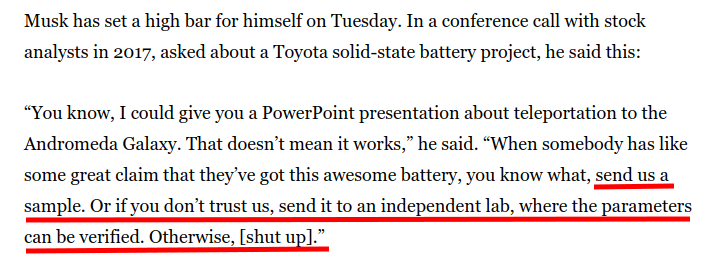
p.s.
Data sources. Many thanks to many who helped me out.
US: tedb.ornl.gov/data/
Europe: acea.be/statistics/art…
Finland: aut.fi/en/frontpage_v…
Japan: keikenkyo.or.jp airia.or.jp/publish/statis…
Data sources. Many thanks to many who helped me out.
US: tedb.ornl.gov/data/
Europe: acea.be/statistics/art…
Finland: aut.fi/en/frontpage_v…
Japan: keikenkyo.or.jp airia.or.jp/publish/statis…
• • •
Missing some Tweet in this thread? You can try to
force a refresh





















